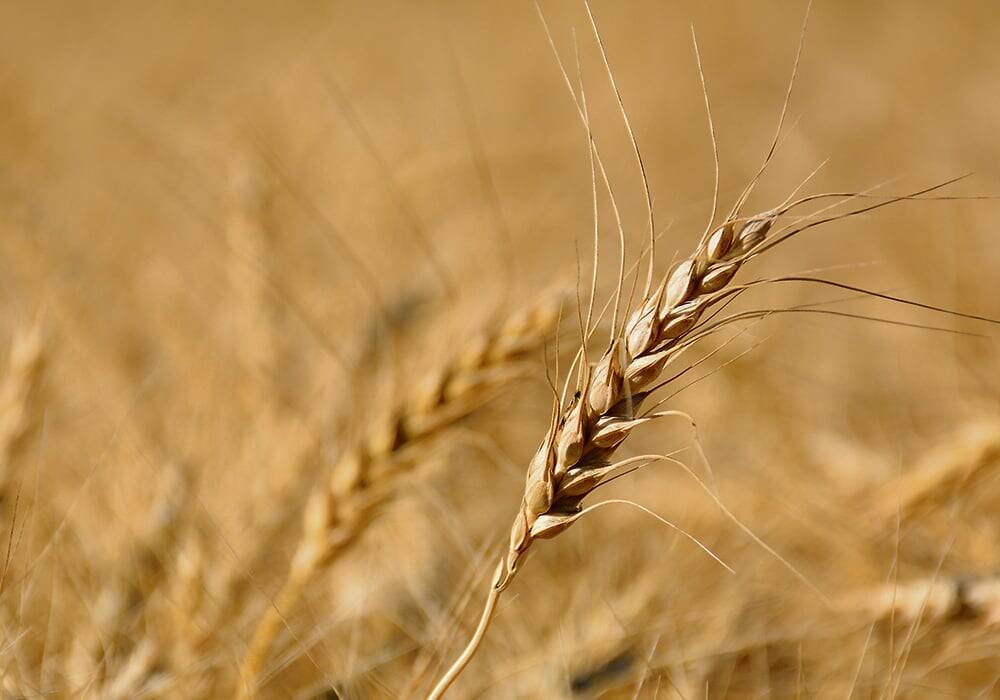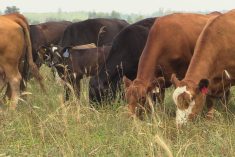Compared to last week, Western Canadian yearling prices were relatively unchanged; prices for mid-weight calves were $2 to $5 higher. Calves under 550 pounds were up $6 to $8 on average while feather light bawlers were up a sold $10 above week-ago levels. Weaker feed grain prices along with strength in the deferred live cattle futures set a positive tone for the week. There were limited numbers on offer and the scarcity factor also came into play. Strength in the yearling market has started to trickle into the calf complex. It appears that 1000-pound yearling steers off grass will be priced at $210 in September.
Read Also

Prairie CWRS bids rise, other wheats mixed
Canada Western Red Spring (CWRS) wheat bids across the Prairie provinces saw some strength during the week ended Nov. 11, taking some direction from the United States futures. However, other wheat classes were mixed.
This past week, pee-wee steer calves around 350 pounds in the Lethbridge area reached over the psychological $300 level. Pasture conditions are excellent across the prairies and this may delay marketings. There is no major frost in the 45-day forecast. This will be supportive for the feeder market in the short term. The fed cattle market is expected to incorporate a risk premium due to the uncertainty in production in the final quarter of 2022 and first quarter of 2023. Early yearlings coming off grass will be extremely hot as buyers on both sides of the border scramble for early ownership.
Total volumes were limited last week with most auction barns in holiday mode. In Central Saskatchewan, a handful of mixed steers of various build averaging 935 pounds were quoted at $192. In Southern Alberta, mixed steers weighing 925 to 950 pounds were quoted from $194 to $198. Small volumes made the market hard to define. Merchants are shopping yearlings off grass for late August and September delivery. Higher quality large frame steers averaging 1000 pounds are quoted at $210 and 1000-pound heifers are valued at $192. Feedlots are starting to step up at these levels.
Silage season is in full swing but these prices will look like a steal come mid-September. The markets have not fully digested the year-over-year decline in the calf crops. More importantly, the abnormal marketing structure south of the border due to the drought in the Southern Plains will result in a sharp decrease in U.S. yearling supplies this fall.
The markets are starting to come alive for mid-weight weaned calves and light-weight bawlers although there was very light test of calves this past week. In the Lethbridge area, 300-400-pound steers were trading in the range of $ $270 to as high as $309; steers in the 400-500-pound category were quoted from $265 up to $272. Southeast of Calgary, a small group of black steers weighing just over 600 pounds were quoted at $265 landed in the feedlot. North of Calgary, a handful of mixed heifers averaging 630 pounds were quoted at $226. During August, the markets can be quite variable because price discovery develops over time.
The Canadian barley crop is likely made at this time and harvest is right around the corner in Southern Alberta. Crop estimates now range from 10.0 to as high as 10.5 million tonnes, up from last year’s crop of 6.9 million tonnes and up from the five-year average of 9.3 million tonnes. Canadian feedlots will be on equal footing with their U.S. counterparts for feed grain costs this fall.















